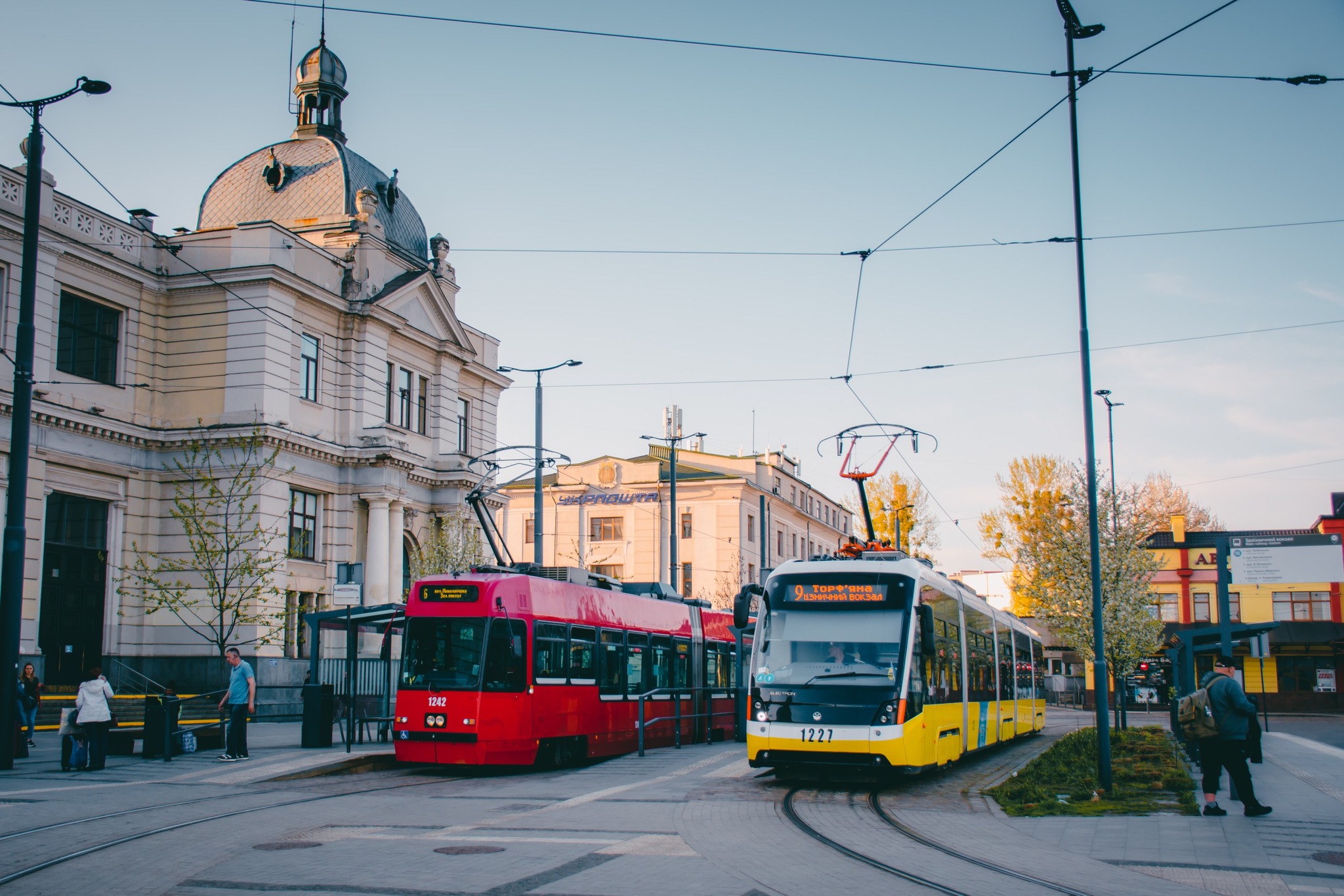Ukraine ranks third in Europe after France and Germany in terms of the number of tram systems. This was mentioned on 01.09.2025 during an interview of the Ukrainske Radio with Viktor Zagreba, a researcher of tram systems in Ukraine and the EU and chairman of the NGO “Vision Zero”. The main points of the conversation are presented below.
Eighteen cities in Ukraine have tram routes, says the expert. At the same time, he adds that only Lviv, Vinnytsia, Dnipro, and Odesa are trying to modernize this type of transport. The remaining 14 cities in Ukraine with trams are not showing much enthusiasm. And that's a shame, according to Zagreba. After all, the efficiency of electric transport per unit of energy consumed is many times higher than that of the internal combustion engines of the same minibuses. Trolleybuses, of which there are more than 4,000 in Ukraine, also have a right to exist, the expert notes. However, these are still electric buses, unable to accommodate 300 passengers like modern trams.
“State norms and standards are even more outdated than our trams.”
Why are there objectively fewer tram routes in our cities than in Europe?
Trams and trolleybuses are a very large underestimated resource of Ukrainian cities, which we inherited from the Soviet system. They may seem slow and uninteresting. However, they are a very valuable asset that should be preserved and developed. Our tram systems are outdated. However, state norms and standards in Ukraine are even more outdated than our trams. Therefore, changes should start with state documents. This will open up the possibility for our trams to become modern.
Lviv – a leader in the preservation and development of tram systems
Why does the state have such an attitude towards trams?
Here, we need to separate the state from local government bodies, because urban transport is primarily the prerogative of our mayors. In Ukraine, there are some mayors who sympathize with why trams are useful for the city. The only city that has been developing its tram network over the past 35 years is Lviv. It is a leader in the preservation and development of tram systems. In addition to Lviv, Vinnytsia, Dnipro, and Odesa also have a positive view of trams. They are trying to modernize them and increase their speed. The remaining 14 cities in Ukraine that have trams are not enthusiastic about them. On the contrary, tram traffic is declining in Kyiv, Zhytomyr, and Kharkiv.
Trams and trolleybuses are not mass transport, but social transport
Why are trams good for the city?
Modern tram systems are beneficial for cities for several reasons. They provide a reliable, fast, and inexpensive transportation option. Trams, or a combination of trams and subways in modern European cities, are usually faster than cars. When public transport is well developed, it encourages people not to drive their cars unless absolutely necessary. This reduces traffic congestion and eases the burden on the city. As a result, people with limited transportation options—state and local politicians, as well as the police and emergency services—are able to move around the city more quickly. In Ukraine, this system does not work. Trams and trolleybuses are not a form of mass public transport in our country, but rather a form of social transport. Mass transport in Ukraine consists of cars and minibuses.
From a technical point of view, trams are better than other types of transport because rail transport is much more efficient than road transport. The same applies to electric motors: the efficiency of electric transport per unit of energy consumed is many times higher than that of internal combustion engines. In addition, modern trams have a very large capacity. Trams in Berlin, Warsaw, or Budapest can carry about 350 people at a time. It's like a very large airplane. The carrying capacity of a modern tram line is close to that of the metro.
Bridges and trams go together perfectly
How compatible are trams and bridges? Take, for example, Paton Bridge in Kyiv.
Bridges and trams go together perfectly. Bridges are a separate problematic issue for Ukraine as a whole. The tram was removed from the Paton Bridge in Kyiv not because of its poor condition, but to add a lane for motor vehicles. It is a misconception that one lane will solve the problem of traffic jams.
It is a question of strategy and political understanding on the part of city leaders.
How are tram systems dying out and what is replacing them?
In Zhytomyr, for example, there is only one tram route left. During the COVID-19 pandemic and the full-scale invasion, it was shut down and there were doubts as to whether it would ever start operating again. This is not a question of finances. It is a question of strategy and political understanding on the part of city leaders. Kyiv, Odesa, and Kharkiv are cities with large budgets, and we see how these budgets are wasted on ultra-expensive capital repairs. Cities that lack money always have international sources of funding that are willing to provide preferential loans or grants. So far, cities have been using these opportunities to purchase rolling stock. They are buying trams and trolleybuses. However, only Lviv has managed to build a new line or depot. In other cities, the substations are very old.
There are over 4,000 trolleybuses in Ukraine
Which requires more investment: trams or trolleybuses?
Trolleybuses are certainly useful too. They are essentially electric buses. There is currently a global trend toward electric mobility. Ukraine already has electric buses. We have over 4,000 electric buses, which we call trolleybuses. Trolleybuses are part of urban mobility, but they have the same low status as trams in terms of perception. They are slow, with long intervals between trips. They are social transport, not mass transport. Trolleybuses should be preserved, but they are not competitors to trams. They are still buses that run on the road and cannot accommodate 300 passengers like modern trams. They should remain, but not replace trams.

Trams Vevey and Electron T5L64 trams on Dvirtseva Square in Lviv (photo by Volodymyr Karaim).
“Ukraine ranks third in Europe in terms of the number of tram systems.”
Which countries are the leaders in terms of the number of tram systems?
Trams are a rather conservative sector in Europe. Germany and France have the most tram systems. Ukraine ranks third in Europe in terms of the number of tram systems. We have 18 of them. Poland and Spain have fewer than we do. However, they are modernizing and maintaining them in good condition. Trams run fast, they are large and barrier-free, with a frequency of 10-15 minutes.
Building codes need to be changed
How can the issue of tram noise be resolved?
There are technologies for reducing noise. New lines are already being built with noise absorption. Our building codes contain many prohibitions. Tram lines cannot be built if the nearest houses are less than 20 meters away. This means that on no street in the center of Kyiv or Lviv can a tram line be restored where it once was. The goal is probably to protect residents from vibration and noise. Abroad, this problem is solved, for example, by replacing the windows of nearby houses with modern energy-efficient windows with noise protection. This is included in the budget for the construction of the tram line. This way, residents are satisfied because the tram runs where they need it to and there is no noise or vibration.







